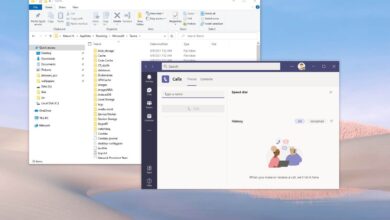How to Choose the Right Workforce Optimization Software for Your Construction Business

Improve daily operations with the best workforce management software for construction businesses. These solutions allow you to more accurately estimate how much labor will be needed for projects and simplify staffing meetings, helping reduce costs by eliminating wasteful practices and inefficiency.
Tools designed to maintain compliance reduce operational risk. Automated timesheet generation, payroll integrations, and providing a central hub for HR documents all help reduce administrative costs significantly.
If you don’t have time to compare numerous workforce optimization software options for your construction business, you should choose one of the top-rated options, like Bridgit.
1. Ease of Use
Workforce optimization tools help construction managers effectively oversee all of the hands that contribute to a project, saving time by eliminating paper forms and administrative tasks that waste valuable resources.
Construction industry paperwork can be an enormous hassle. From customer invoices and signoffs to fuel expenses and site risk forms, workers often carry around piles of documents during each job site visit – potentially leading to damaged documents, delayed submissions to back office systems, and other complications.
Workforce optimization software empowers employees with digitalized paperwork so that submission can occur directly from job sites.
Keep an eye on labor costs, as they are essential to any construction firm’s budget. By automating workflows, the right workforce management software can help eliminate wasteful spending and maintain profits at a steady rate.
In addition to offering features for union reporting and tracking to protect workers from time theft practices in the industry, mobile-friendly versions should also be considered because workers frequently utilize smartphones while on the job site.
2. Security
Several companies across various industries employ workforce management tools, but construction businesses mainly rely on workforce tools for workforce administration. These platforms help oversee labor, manage payroll, and schedule employees. Furthermore, these platforms improve productivity while decreasing operating costs by automating manual processes.
Some software solutions provide features, such as trend forecasting and analysis, that enable managers to anticipate the future staffing needs of their organization and plan accordingly to avoid under or over-allocating personnel.
These solutions can also help avoid downtime caused by scheduling errors, which delays project completion and increases expenses. Construction workforce optimization software can reduce this downtime by optimizing utilization rates to optimize utilization rates and thus decrease any possible downtime.
Smart apps in construction projects have enabled contractors to overcome many challenges and increase overall productivity, giving greater visibility and communications between project stakeholders to help complete more projects on time and under budget while maintaining competitive advantages by offering quality products to clients.
3. Integrations
A successful construction workforce management solution should integrate with your existing tech tools and applications for maximum transparency and visibility across operations and projects, eliminating data silos while increasing productivity.
As an example, certain software offers built-in integrations that allow it to connect seamlessly with accounting systems and project management tools – enabling you to efficiently manage your crew and track labor costs on one platform without having to manually input data.
Additionally, time-tracking software must feature finger-scan and card-swipe time-tracking systems to reduce buddy punching (a common issue in construction).
Many solutions also offer GPS tracking so you can keep an eye on where your crew members are at work sites; this reduces theft/misappropriation risk as well as creating a safe working environment and creating trust between employees – ultimately leading to higher engagement and satisfaction rates among them.
4. Pricing
Workforce management solutions are essential for construction businesses as they allow them to identify and allocate adequate labor in a cost-efficient manner, thereby helping ensure project tasks are completed on schedule and on budget.
An effective workforce management system can streamline staff meetings and increase employee productivity, freeing human resources teams up to focus more time on big-picture strategies.
These tools allow construction firms to efficiently manage punch lists, worker to-dos, client billing and project documents in one central place – saving both time and effort by eliminating spreadsheets and emails as well as tracking key metrics like costs, schedules and client satisfaction more easily than before. Furthermore, these solutions offer better data analytics, making their use essential in improving overall operational efficiency.



